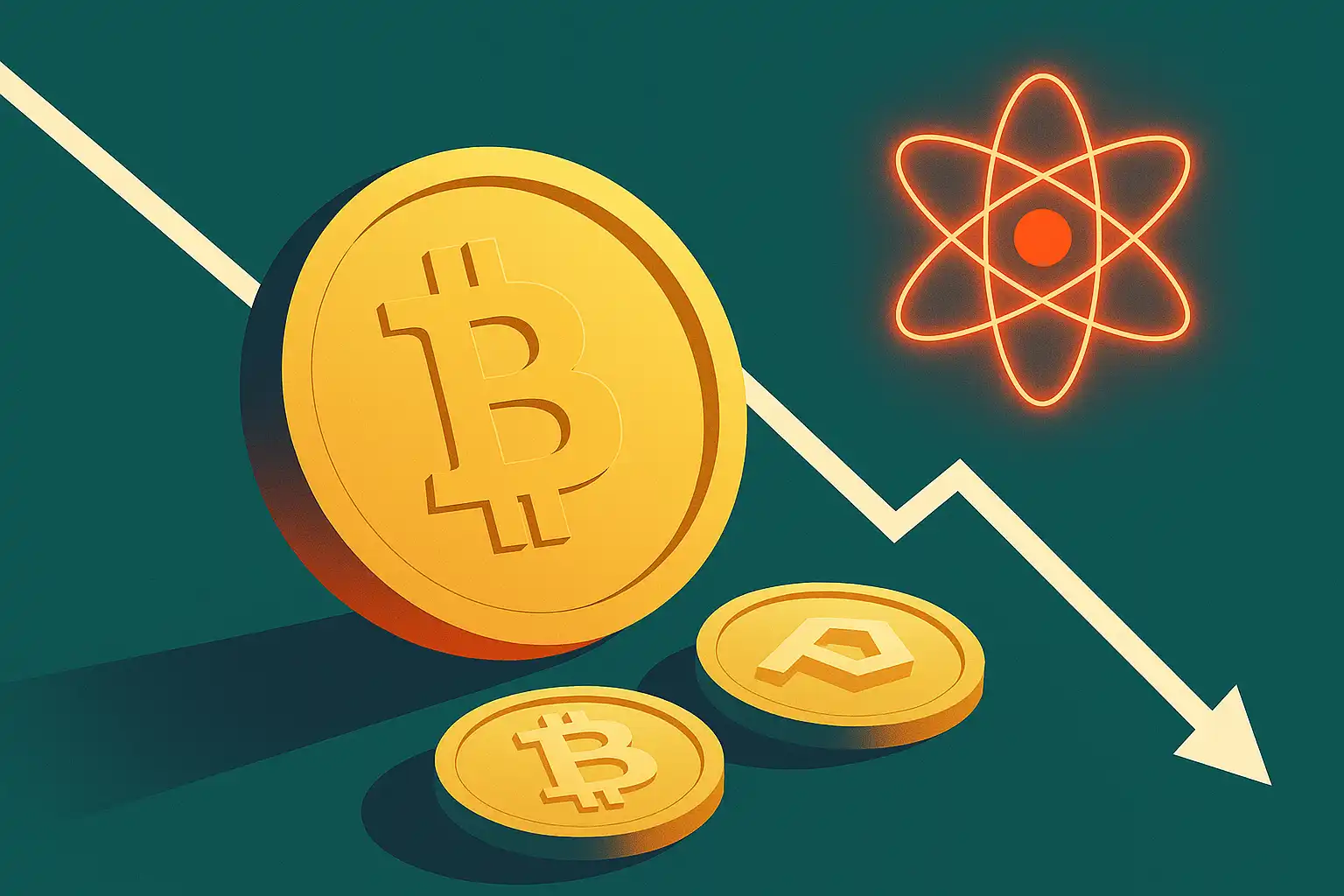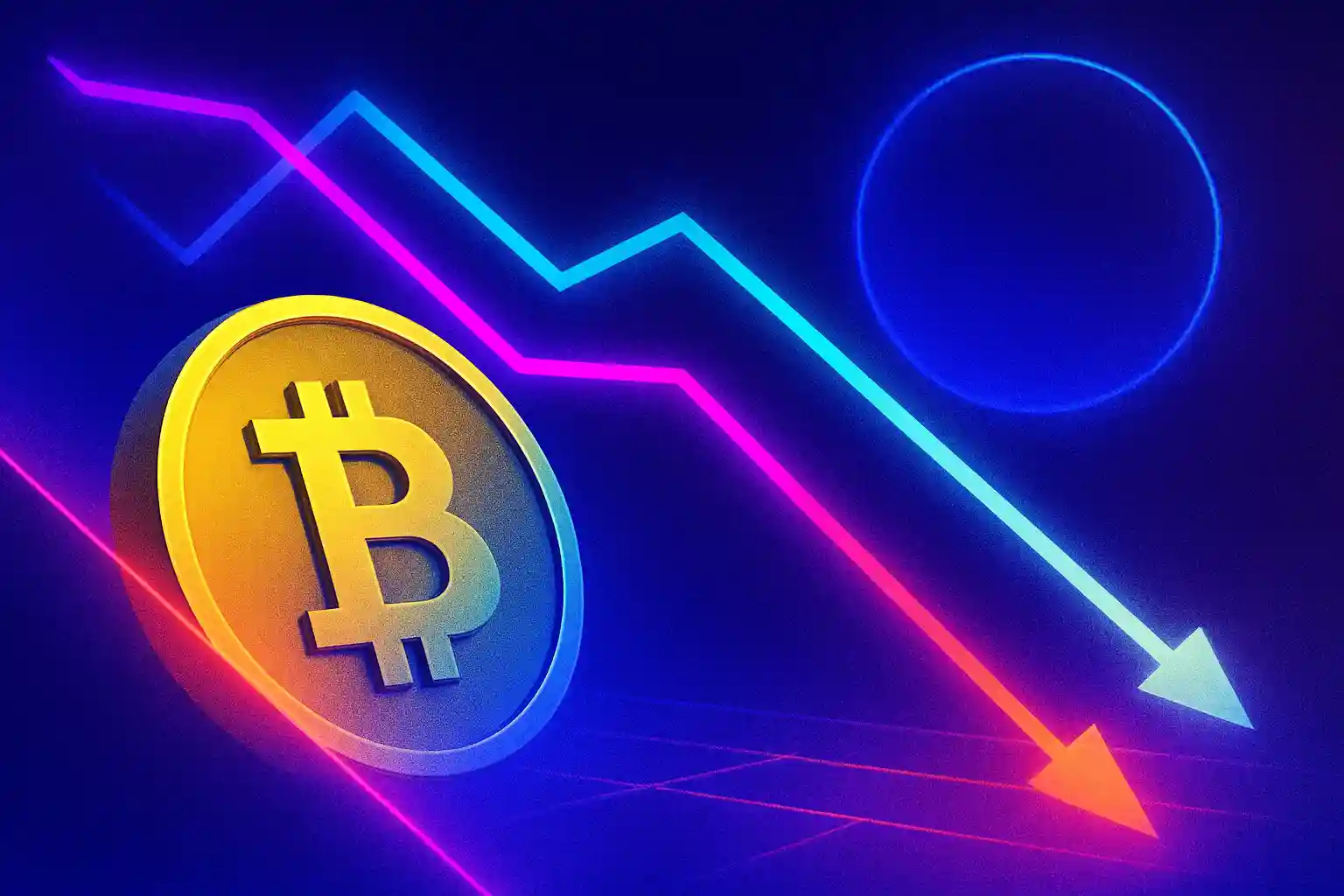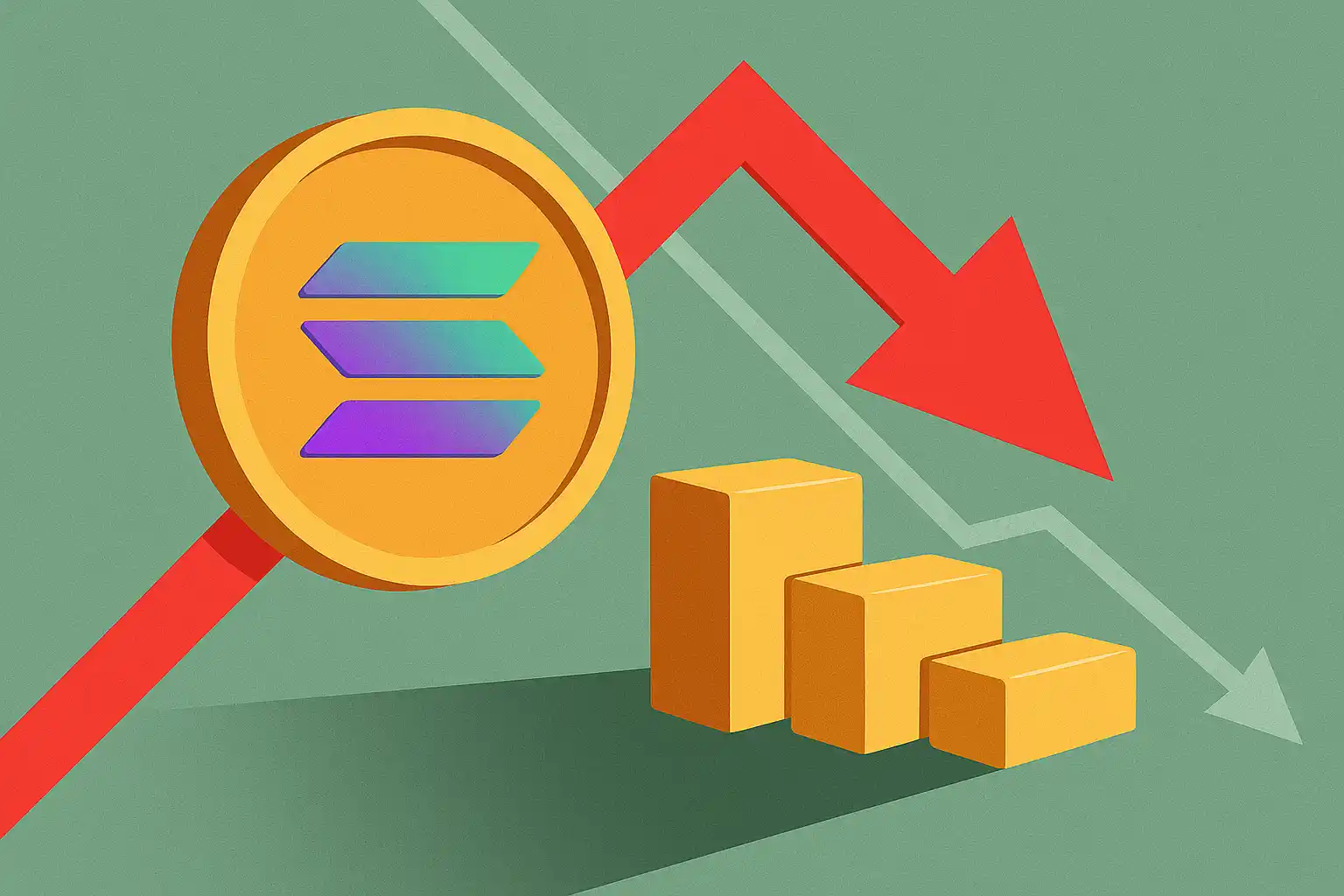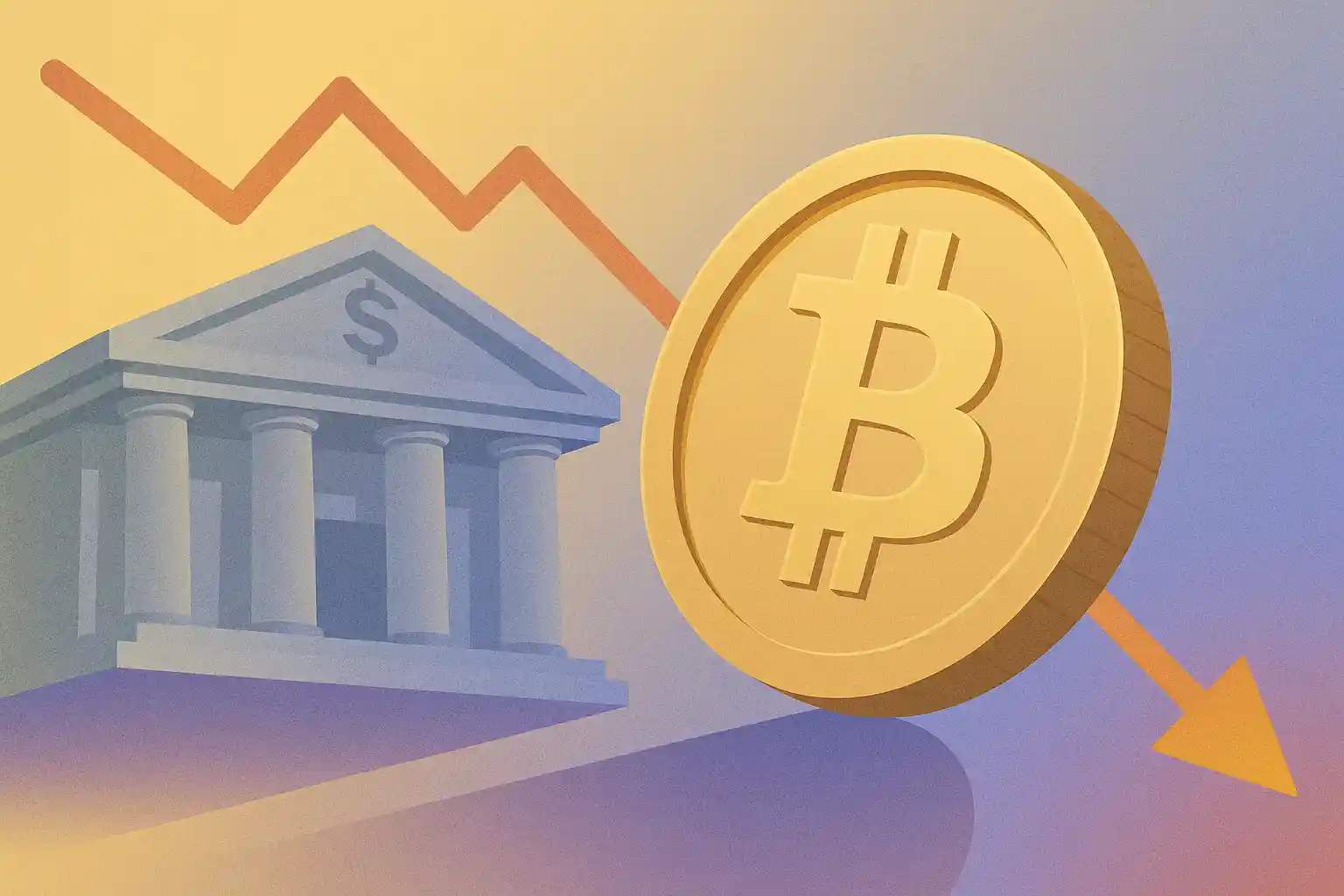Trump Tariffs Create Pump-and-Dump Cycles in Crypto and AI Markets Through Policy Volatility
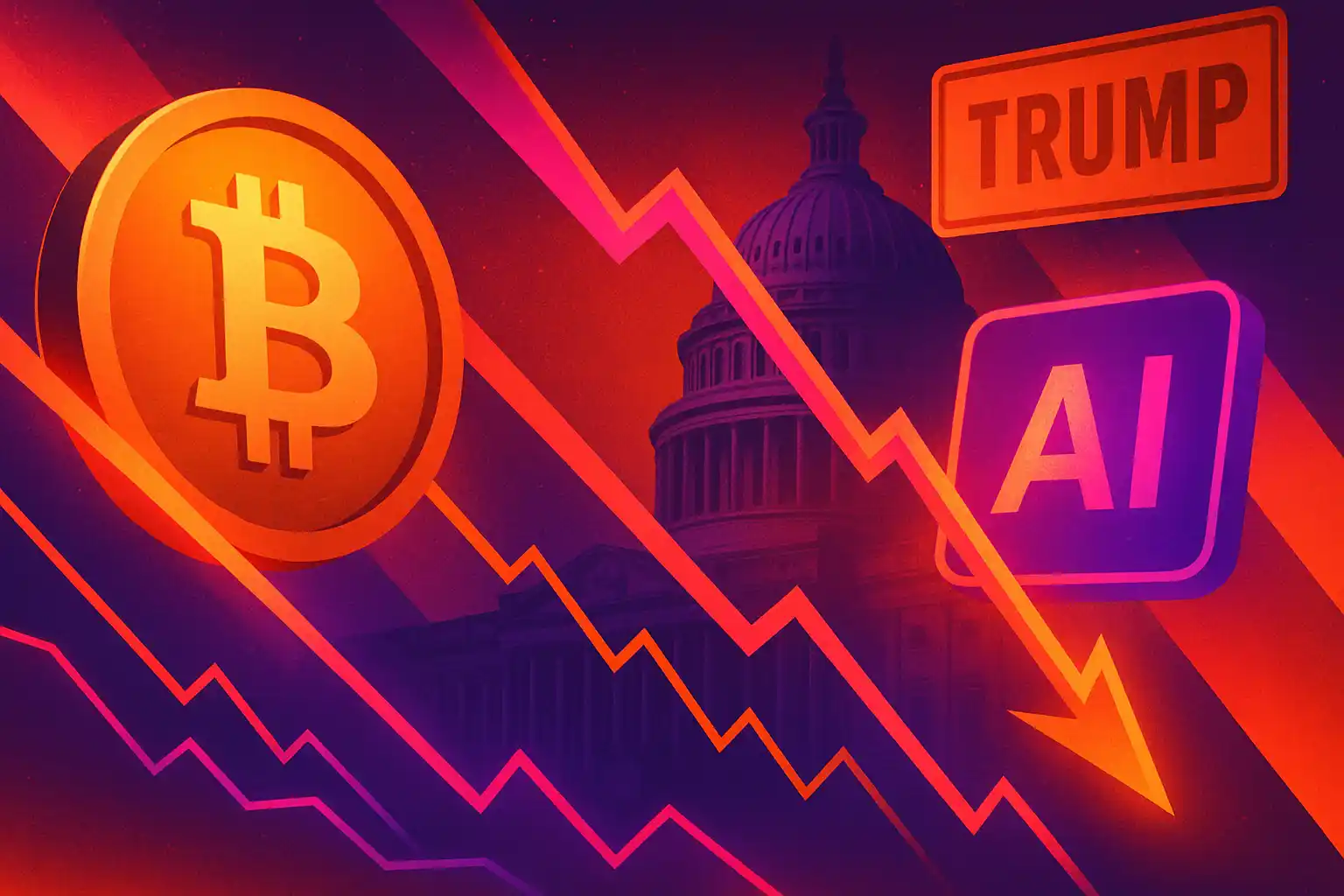
In Brief
Trump tariff announcements trigger predictable panic-recovery cycles that liquidated $19 billion in crypto positions during recent market crash.
AI mega-deals including OpenAI-AMD and Nvidia-Intel partnerships fuel dramatic stock surges followed by sharp pullbacks as fundamentals fail to justify initial hype.
AMD stock jumped 38% on OpenAI deal announcement before cooling as analysts recognized limited immediate profit impact, mirroring pump-and-dump patterns.
Concentrated speculation among small circle of tech giants creates closed financial system where capital recycles without generating proportional real value.
Pattern of sentiment-driven volatility disconnecting asset prices from economic fundamentals raises concerns about potential bubble formation across crypto and tech sectors.
Trump tariff policy has established a predictable pattern of market disruption that generates pump-and-dump-style volatility across crypto and AI-related assets, with policy announcements triggering panic selling followed by rapid recoveries as positions shift—often with catastrophic consequences for leveraged traders caught in the whipsaw. The mechanism extends beyond traditional tariff impacts to encompass the broader intersection of policy uncertainty, speculative positioning, and headline-driven trading that characterizes contemporary crypto markets.
Similar dynamics now pervade AI sector partnerships, where multi-billion-dollar deals between tech giants generate explosive initial reactions that fade as market participants recognize the gap between announcement spectacle and fundamental business impact.
Tariff Announcements Function as Market Manipulation Tools
US trade policy shifts under Trump have demonstrated remarkable capacity to move markets through sentiment rather than substance, with each announcement cycle following a repetitive pattern that sophisticated traders have learned to anticipate and exploit. The predictability of these cycles creates opportunities for those positioned correctly while devastating participants caught on wrong sides of moves.
The most recent dramatic example occurred earlier this month when renewed tariff announcements triggered a market crash that liquidated over $19 billion in crypto positions within a single day. This liquidation cascade—where forced selling from margin calls triggers additional margin calls in a self-reinforcing cycle—represents the destructive potential of policy-driven volatility in highly leveraged markets.
The pattern typically unfolds as follows: Trump escalates tariff threats or announces new trade restrictions, particularly targeting China or other major trading partners. Markets immediately sell off amid uncertainty about economic impact and fear of retaliation. Crypto assets, which trade 24/7 without circuit breakers, often experience amplified volatility as global participants react across time zones.
Once Trump softens positions, delays implementation, or signals negotiation willingness, markets reverse sharply upward. Participants who sold during panic phase rush to re-establish positions, creating short-covering rallies and momentum-driven buying that can exceed the initial decline’s magnitude. This recovery phase often occurs as rapidly as the selloff, leaving markets near starting points but with substantial casualties among leveraged traders who couldn’t weather the volatility.
Why Crypto Amplifies Tariff Volatility
Cryptocurrency markets demonstrate particular vulnerability to tariff-driven cycles due to several structural characteristics that magnify policy uncertainty impacts. The 24/7 trading environment means reactions occur immediately without the cooling-off periods that traditional market circuit breakers provide. Participants trading during off-hours for US markets—when liquidity is thinner—can trigger cascading moves that accelerate during subsequent sessions.
High leverage availability in crypto derivatives markets amplifies both gains and losses, creating liquidation cascades when positions move against traders. Many platforms offer 10x, 20x, or even 100x leverage, meaning relatively modest price moves trigger margin calls that force position closures regardless of long-term conviction.
The correlation between crypto and risk assets broadly means tariff uncertainty that pressures equities simultaneously impacts digital assets. Bitcoin and major altcoins increasingly trade with high correlation to technology stocks and broader market sentiment, making them vulnerable to macro policy shifts that might seem unrelated to blockchain technology itself.
Cryptocurrency’s positioning as alternative to traditional finance ironically makes it highly sensitive to traditional finance disruptions. When tariff announcements suggest economic slowdown or recession risks, flight-to-safety behaviors reduce appetite for speculative assets like crypto, triggering selling pressure independent of any blockchain-specific developments.
AI Mega-Deals Mirror Pump-and-Dump Mechanics
The pattern of explosive initial reactions followed by reality-check corrections extends beyond tariff announcements into AI sector partnership announcements, where the scale of deals and prominence of participants creates similar sentiment-driven volatility divorced from fundamental analysis.
OpenAI and AMD’s recent agreement for computing capacity deployment and warrants allowing OpenAI to acquire up to 10% of AMD stock triggered a 38% single-day surge in AMD shares—a move representing tens of billions in market capitalization creation within hours. The magnitude of this reaction reflects market enthusiasm for AI infrastructure deals and the OpenAI brand’s ability to generate excitement.
However, the stock “quickly started to cool off” as analysts examined deal specifics and recognized the gap between announcement excitement and near-term profit implications. The warrant structure, complicated deployment timelines, and questions about actual revenue impact relative to market cap increase led to reassessment that pulled the stock back substantially from initial surge levels.
This cycle—explosive initial reaction, analytical reassessment, significant pullback—mirrors classic pump-and-dump patterns where price spikes on excitement before fundamentals reassert themselves. The difference from illegal pump-and-dump schemes is that these moves stem from legitimate business announcements rather than coordinated manipulation, yet the price action and trader experience remain remarkably similar.
Nvidia-Intel Partnership Follows Identical Pattern
The $5 billion collaboration between Nvidia and Intel generated a 23% single-day jump in Intel stock, representing another example where deal announcement generated immediate market enthusiasm that subsequent analysis couldn’t sustain. The partnership between two semiconductor giants carried inherent credibility that justified initial positive reaction, yet the magnitude of stock movement exceeded what fundamental analysis supported.
Analysts quickly questioned whether market reaction was overblown, noting the deal wouldn’t immediately boost Intel’s profitability and that excitement stemmed more from AI sector hype than concrete near-term financial impacts. As this analysis circulated, Intel stock retreated from initial surge levels, turning what appeared to be a transformative announcement into a short-lived rally that primarily benefited those who sold into the initial enthusiasm.
The pattern repeats across recent billion-dollar announcements from major investment firms and tech companies: sharp initial swings driven by headline excitement followed by quick reversals as market participants distinguish between announcement spectacle and business substance. Each cycle trains participants to view such announcements as trading opportunities rather than fundamental investment catalysts.
Closed System Creates Artificial Value Inflation
What distinguishes current AI and tech sector dynamics from organic market growth is the concentration of activity among a small circle of companies that increasingly transact primarily with each other. This creates what critics characterize as a closed financial circuit where capital recycles within the same ecosystem rather than generating genuinely new economic value.
Recent high-profile announcements demonstrate this pattern: OpenAI partners with AMD while receiving investment from Microsoft, which itself partners with various AI infrastructure providers who transact with the same limited group of chip manufacturers and cloud platforms. Money flows between these entities through partnerships, investments, and deals that create the appearance of explosive growth while potentially representing more redistribution than creation of value.
When Intel and Nvidia announce collaboration, or when OpenAI secures computing capacity from AMD, these transactions occur within a relatively closed system of tech giants. The billions changing hands represent commitments between entities that often hold stakes in each other, creating circular flows where investment returns depend on valuations within the same interconnected group.
This concentration means a handful of companies can move vast amounts of speculative capital through partnership and investment announcements that generate headlines and drive stock prices. Valuations skyrocket on deal announcements, creating paper wealth that attracts more speculative capital seeking exposure to AI growth narrative. The cycle becomes self-reinforcing: higher valuations attract more capital, enabling larger deals, generating bigger headlines, driving further valuation increases.
Speculation Disconnects Prices From Fundamentals
The mechanism creates conditions where asset prices increasingly disconnect from underlying economic value or profit-generating capacity. When stocks surge 23% or 38% in single days based on partnership announcements that analysts immediately recognize won’t materially impact near-term profitability, the gap between market price and fundamental value widens dangerously.
This disconnection resembles classic bubble dynamics where prices rise because participants expect them to rise, creating momentum that sustains itself until some catalyst triggers reassessment. The difference from historical bubbles is the speed at which cycles occur—explosive surges and sharp corrections happening within days rather than months or years.
The closed-system nature amplifies risks because valuations increasingly depend on transactions within the same circle of companies. If one major participant faces difficulties, the interconnections mean problems propagate rapidly through the network. The 2008 financial crisis demonstrated how closed systems with circular dependencies create systemic risk—when one link breaks, the entire chain experiences stress.
Parallels Between Tariff and Deal-Driven Volatility
Both Trump tariff announcements and AI mega-deal revelations share common characteristics that generate similar market dynamics despite superficial differences in subject matter. Both create headline events that dominate media coverage and demand immediate market response. Both generate uncertainty about future implications that drives sentiment-based trading rather than fundamental analysis.
Both patterns demonstrate markets reacting not to concrete economic changes but to perceived implications of announcements whose actual impacts remain uncertain or distant. Tariff announcements might eventually affect corporate profits and economic growth, but immediate market reactions occur before any real-world business impact materializes. Similarly, AI partnership announcements represent potential future value that may or may not materialize, yet markets price in optimistic scenarios immediately.
The predictability of both patterns creates opportunities for sophisticated traders to position ahead of announcements or trade the reaction cycles. This gaming behavior further amplifies volatility as participants increasingly trade based on expected market reactions rather than fundamental analysis of underlying developments.
Bubble Risk Intensifies With Momentum Chasing
The greatest risk emerging from these patterns is formation of financial bubbles where prices inflate beyond any reasonable fundamental justification, creating fragility that eventually resolves through sharp corrections or crashes. Multiple characteristics of current dynamics suggest bubble conditions are developing or already present.
First, momentum-driven trading where participants chase price movements rather than analyze underlying value represents classic bubble behavior. When investors buy assets primarily because prices are rising, creating self-reinforcing cycles, the foundation for eventual reversal is established.
Second, the disconnect between announcement excitement and fundamental business impacts creates situations where prices reflect narrative and speculation rather than profit-generating capacity. When analyst reassessments consistently identify that market reactions exceeded what fundamentals justify, it signals prices have extended beyond supportable levels.
Third, the closed-system dynamics where the same circle of companies transacts primarily with each other while valuations depend on those transactions creates circular logic vulnerable to sudden collapse if any component weakens. This interconnectedness means problems don’t remain isolated but propagate through the system rapidly.
Fourth, the pattern of explosive surges followed by sharp pullbacks trains participants to prioritize timing over fundamentals—classic bubble-phase behavior where trading becomes a game of finding greater fools willing to pay higher prices regardless of underlying value.
Historical Precedents Suggest Caution
Financial history provides numerous examples of similar dynamics culminating in bubble bursts that devastate participants who failed to recognize warning signs. The dot-com bubble featured similar patterns: headline-driven trading, momentum chasing, valuations disconnected from fundamentals, and concentrated activity among interconnected companies that ultimately couldn’t justify their market capitalizations.
The 2008 financial crisis demonstrated how closed systems with circular dependencies create systemic risks that manifest suddenly once confidence erodes. The housing bubble showed how self-reinforcing cycles—rising prices attracting more capital, enabling more lending, driving further price increases—eventually reverse catastrophically when the cycle breaks.
Current dynamics in crypto and AI markets share concerning similarities with these historical episodes. The speed of modern markets and prevalence of leverage means contemporary bubbles could inflate and burst faster than historical precedents, creating less time for participants to recognize and respond to warning signs.
Policy Uncertainty as Systemic Risk
Trump tariff volatility represents a form of policy uncertainty that functions as systemic risk factor across markets. When participants cannot reliably predict trade policy directions—with announcements subject to rapid reversals based on political considerations rather than economic analysis—it introduces randomness that undermines investment decision-making and planning.
This uncertainty premium manifests as increased volatility, wider bid-ask spreads, and higher required returns to compensate for unpredictable policy shifts. Markets that might otherwise function efficiently become gambling venues where outcomes depend as much on political whim as economic fundamentals.
The combination of policy-driven volatility and closed-system AI speculation creates compound risks where multiple fragility sources exist simultaneously. A tariff announcement could trigger selloff that exposes overvaluation in AI stocks, creating cascading effects as margin calls force liquidations that pressure crypto markets, which feedback into traditional equity weakness.
What Sustainable Growth Would Look Like
Genuine economic growth and value creation manifest differently than the patterns currently evident. Sustainable advancement features steady progress based on actual adoption, profit generation, and solving real problems rather than explosive surges on partnership announcements that analysts immediately question.
Healthy market dynamics show prices reflecting fundamental analysis of business prospects rather than momentum chasing and headline trading. Valuations align with profit-generating capacity adjusted for risk, creating stability that supports long-term investment rather than speculative positioning.
Open economic systems where value flows broadly rather than recycling within closed circles of interconnected participants demonstrate genuine expansion. New participants entering markets, diverse sources of demand, and competition preventing excessive concentration all characterize healthy growth.
The current environment’s contrast with these characteristics suggests the growth being priced into crypto and AI markets may prove illusory—more inflation of existing capital within closed systems than creation of new value that justifies soaring valuations.
Implications for Market Participants
For traders and investors navigating these dynamics, several considerations emerge. The predictability of tariff and deal-driven volatility creates trading opportunities for those positioned correctly but substantial risks for those caught wrong-sided or over-leveraged. The speed of modern market moves means traditional risk management approaches may prove insufficient.
The gap between initial reactions and fundamental reality suggests fading strategies—selling into initial enthusiasm and buying after pullbacks—may prove profitable, though timing remains challenging and trends can persist longer than rational analysis suggests.
Most importantly, the accumulation of bubble characteristics across crypto and AI sectors suggests significant correction risks exist. Participants who recognize these risks and position defensively may preserve capital that others lose when inevitable reassessment occurs, while those fully invested based on momentum and narratives may face substantial losses when cycles reverse.
The question isn’t whether current patterns represent sustainable growth—the evidence suggests they don’t—but rather when market participants collectively recognize this reality and what catalyst triggers the reassessment that deflates inflated valuations back toward fundamental support levels.
Missed buying crypto at the market bottom?
No worries, there's a chance to win in crypto casinos! Practice for free and win cryptocurrency in recommended casinos! Our website wheretospin.com offers not only the best casino reviews but also the opportunity to win big amounts in exciting games.
Join now and start your journey to financial freedom with WhereToSpin!
Middle East
wheretospininkuwait.com provides a comprehensive selection of trusted online casino reviews for the Middle East أفضل كازينو على الإنترنت. The platform features well-established casinos supporting crypto deposits in the region, including Dream Bet, Haz Casino, Emirbet, YYY Casino, and Casinia.
South Africa and New Zealand
In the South African online casino market, wheretospin.co.za highlights top-rated platforms and online casinos such as True Fortune Casino and DuckyLuck. Meanwhile, for New Zealand players, wheretospin.nz showcases highly recommended casinos, including Casinia, Rooster.bet, and Joo Casino.

